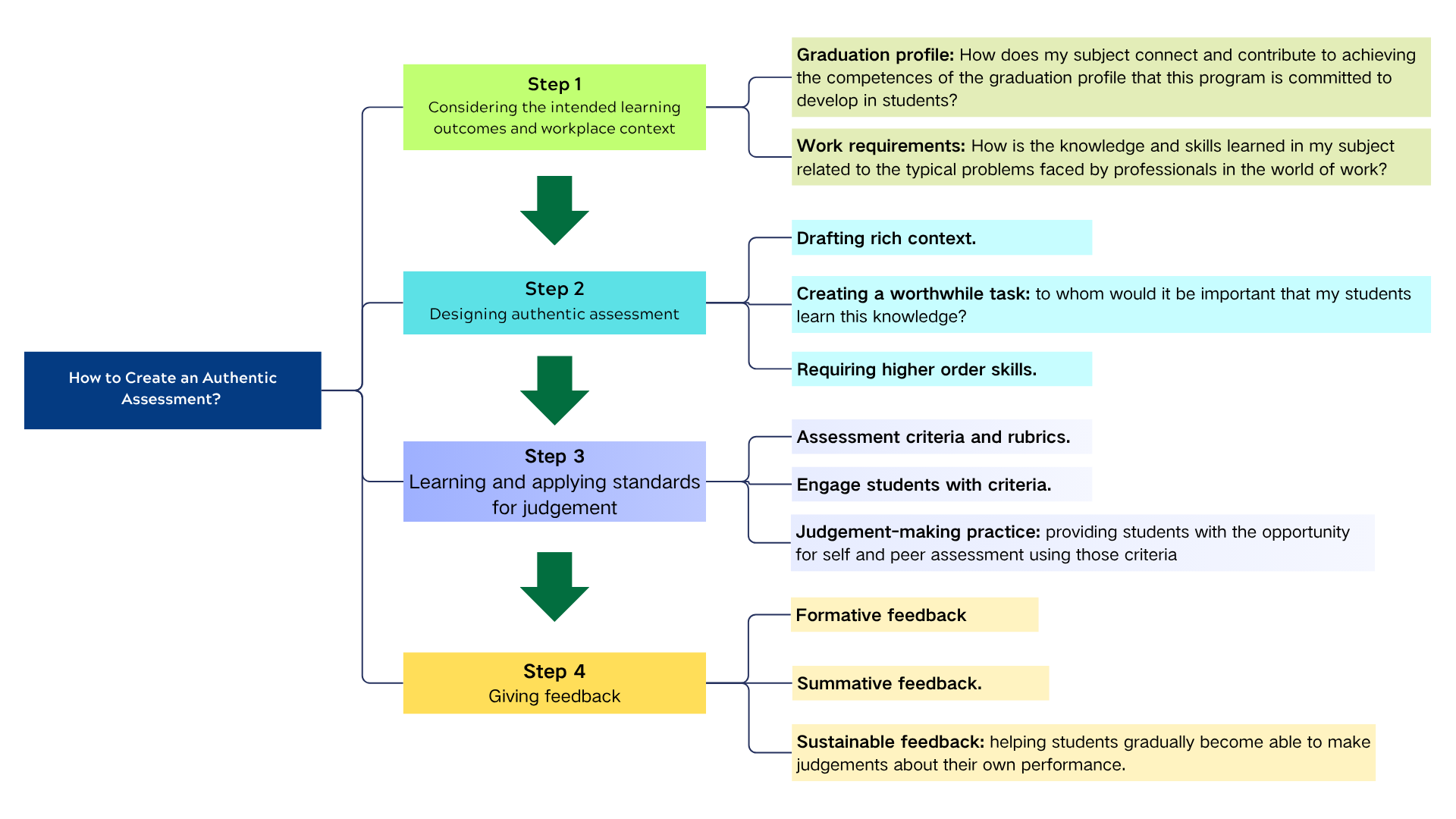Authentic assessment asks students to apply their skills and knowledge to real-world tasks and scenarios, demonstrating their competencies in a way that mirrors how they would need to in their prospective careers.
What makes an assessment authentic?
Realism
real context
authentic tasks
Cognitive Challenge
require higher-order skills
require students to demonstrate performances (such as critical and reflective analysis) and concrete products (such as a diagnostic report)
aim to develop cognitive and metacognitive skills
Evaluative Judgement: foster students’ abilities to anticipate, monitor and improve the quality of their work and that of others
transparent criteria
feedback dialogue
self and peer assessment
Types of Authentic Assessments
Here are some general categories/types of authentic assessments:
Case studies
Role-playing Simulations
Writing to a real audience
Community-partnered research or project development
How to Create an Authentic Assessment?

Practical tips
Balance Challenge, Skill Levels and Workload: Ensure that tasks are challenging enough to be engaging but also match the students’ current abilities, avoiding frustration or disengagement. Break down the assessment and provide feedback and guidance along the way. Offer support structures that aid students in the completion of complex tasks, such as checklists, timelines, or benchmarks.
Integrate Reflection: Have students reflect on their own academic performance on each assessment. Having them identify their own misconceptions and mistakes enhances their learning, helps to develop their metacognitive abilities, and is representative of what a professional must do when they err.
Emphasize Process and Product: Focus not just on the final outcome but also on the process, including planning, problem-solving, and decision-making. Create clear rubrics that reflect this.
Connect with Community: Whenever possible, link assessments with community or industry partners to add authenticity and professional networking opportunities.
Resources
- University of Reading – Designing authentic assessment
- Indiana University – Authentic assessments
- University of Michigan – Michigan sustainability cases
- Columbia University – Case consortium (journalism, public policy, public health)
- National Science Teaching Association – National center for case study teaching in science: Case types & methods
- University of Liverpool – Case studies examples
- Authentic Assessment | Oxford Research Encyclopedia of Education
References
(PDF) Authentic assessment: creating a blueprint for course design (researchgate.net)
Creating authentic assessments | Online Teaching (umich.edu)


